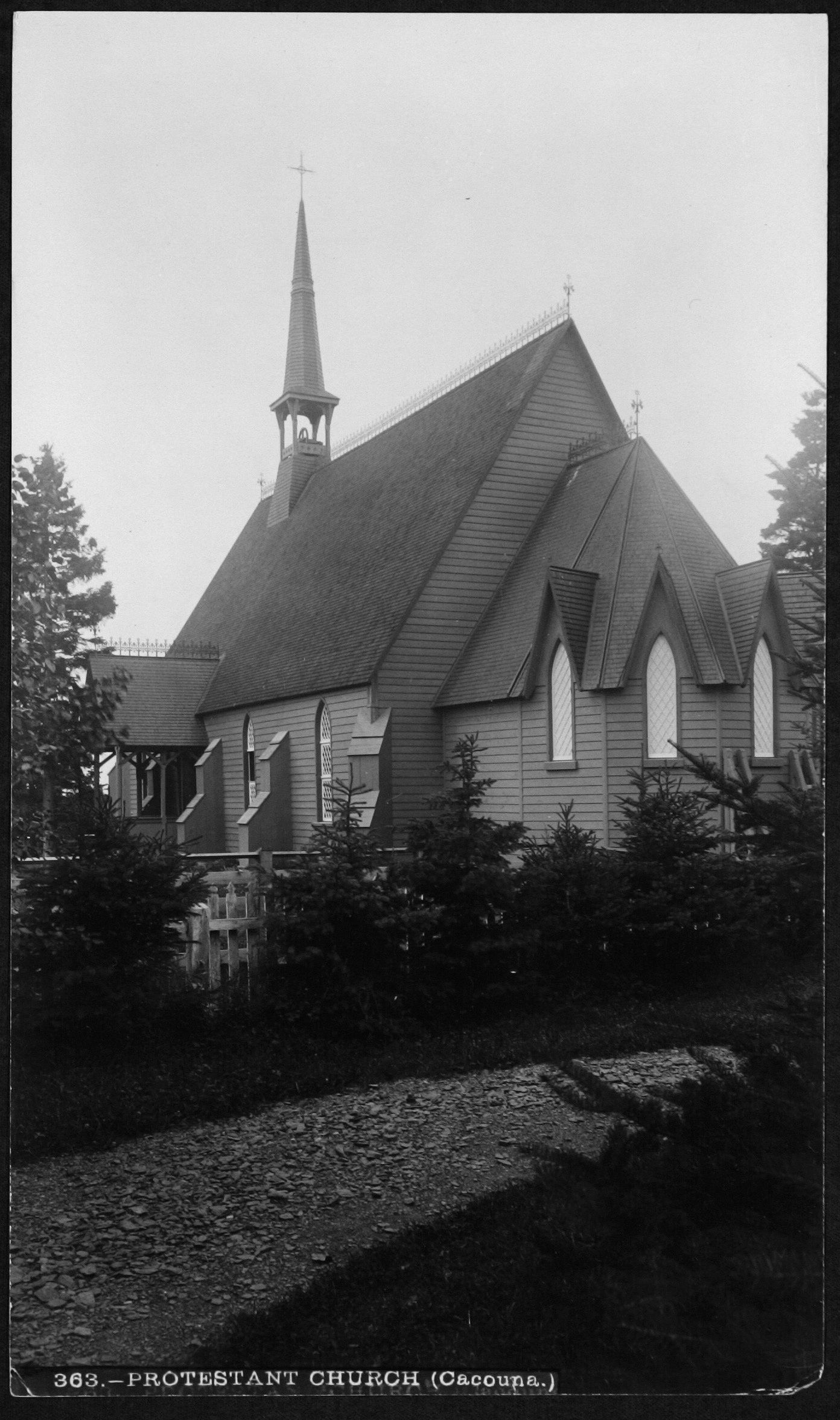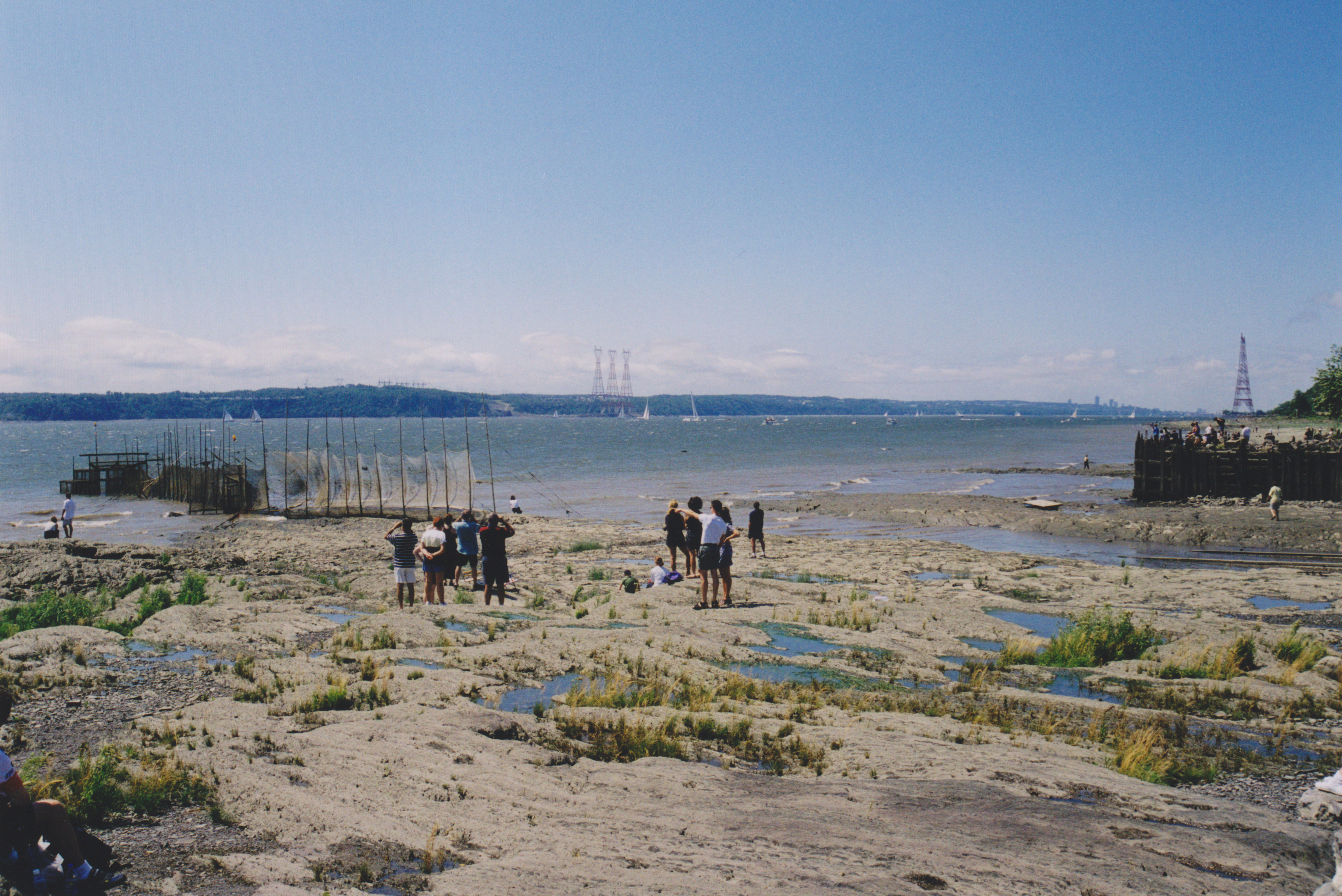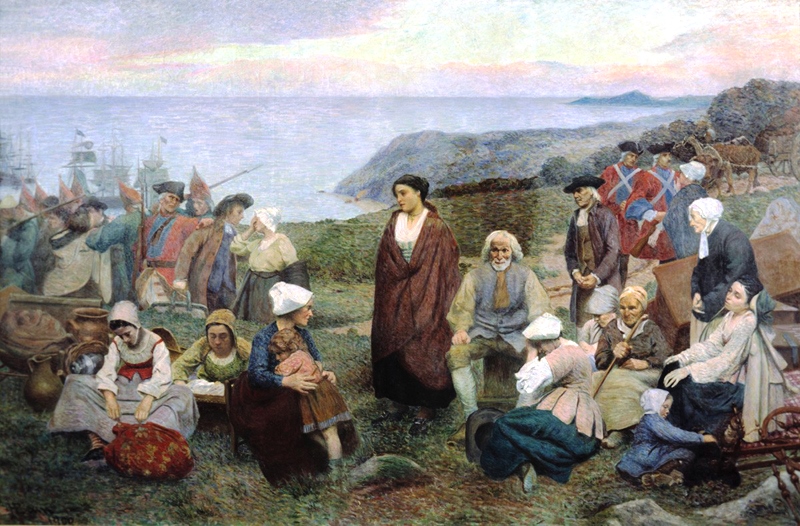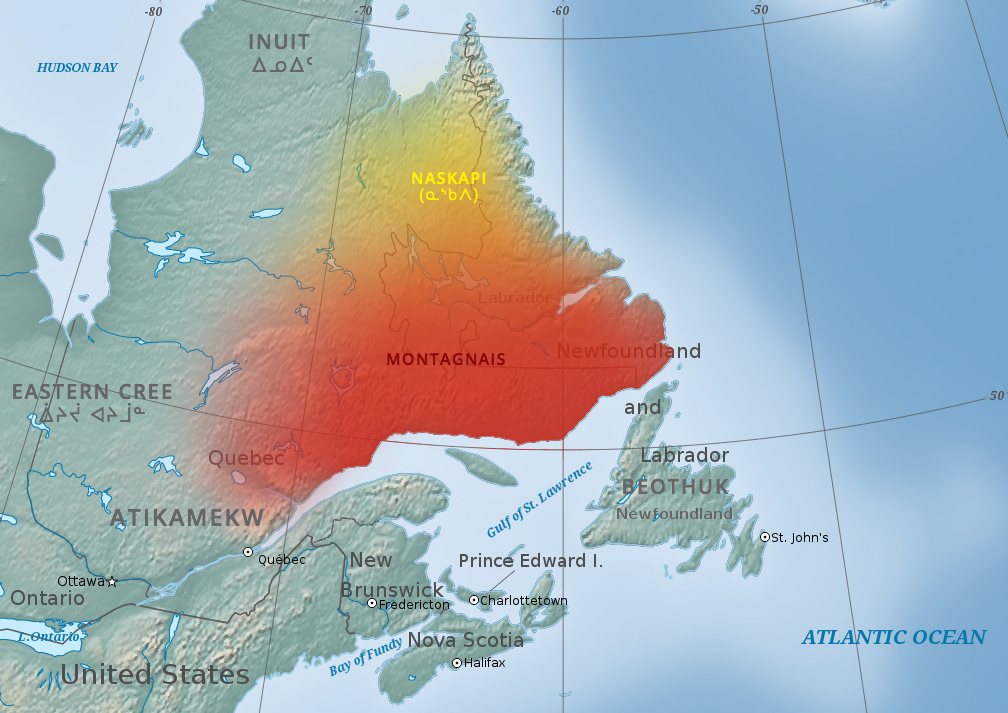|
Cacouna, Quebec
Cacouna () is a municipality in the Rivière-du-Loup Regional County Municipality within the Bas-Saint-Laurent region of Quebec, Canada. It is located on the south shore of the Saint Lawrence River along Route 132. The municipality of Cacouna was created in March 2006 through the amalgamation of the municipality of Saint-Georges-de-Cacouna and the parish of Saint-Georges-de-Cacouna. With a population of 1,900, Cacouna is noted for the quality and unique architectural heritage of its buildings and for the richness and diversity of its agricultural life. The deep water port of Gros-Cacouna is a vital asset in the region's future development. Cacouna is a member of the association The Most Beautiful Villages in Quebec. 'Cacouna' is also the name of an Indian reserve of the Quebec Maliseet Nation, more specifically Wolastoqiyik Wahsipekuk (Viger) First Nation, located in the administrative region of Bas-Saint-Laurent. Etymology Many see in the name 'Cacouna' Cree words, or , me ... [...More Info...] [...Related Items...] OR: [Wikipedia] [Google] [Baidu] |
Municipality (Quebec)
The following is a list of the types of Local government in Quebec, local and Wiktionary:supralocal, supralocal territorial units in Quebec, Canada, including those used solely for statistical purposes, as defined by the Ministry of Municipal Affairs, Regions and Land Occupancy (Quebec), Ministry of Municipal Affairs, Regions and Land Occupancy and compiled by the Institut de la statistique du Québec Not included are the urban agglomerations in Quebec, which, although they group together multiple municipalities, exercise only what are ordinarily local municipal powers. A list of local municipal units in Quebec by regional county municipality can be found at List of municipalities in Quebec. Local municipalities All municipalities (except cities), whether township, village, parish, or unspecified ones, are functionally and legally identical. The only difference is that the designation might serve to disambiguate between otherwise identically named municipalities, often neighbo ... [...More Info...] [...Related Items...] OR: [Wikipedia] [Google] [Baidu] |
Saint Lawrence River
The St. Lawrence River (, ) is a large international river in the middle latitudes of North America connecting the Great Lakes to the North Atlantic Ocean. Its waters flow in a northeasterly direction from Lake Ontario to the Gulf of St. Lawrence, traversing Ontario and Quebec in Canada and New York (state), New York in the United States. A section of the river demarcates the Canada–United States border, Canada–U.S. border. As the primary Discharge (hydrology), drainage outflow of the Great Lakes Basin, the St. Lawrence has the List of rivers by discharge, second-highest discharge of any river in North America (after the Mississippi River) and the 16th-highest in the world. The estuary of St. Lawrence, estuary of the St. Lawrence is often cited by scientists as the largest in the world. Significant natural landmarks of the river and estuary include the 1,864 river islands of the Thousand Islands, the endangered whales of Saguenay–St. Lawrence Marine Park, and the limestone ... [...More Info...] [...Related Items...] OR: [Wikipedia] [Google] [Baidu] |
Montreal
Montreal is the List of towns in Quebec, largest city in the Provinces and territories of Canada, province of Quebec, the List of the largest municipalities in Canada by population, second-largest in Canada, and the List of North American cities by population, ninth-largest in North America. It was founded in 1642 as ''Fort Ville-Marie, Ville-Marie'', or "City of Mary", and is now named after Mount Royal, the triple-peaked mountain around which the early settlement was built. The city is centred on the Island of Montreal and a few, much smaller, peripheral islands, the largest of which is Île Bizard. The city is east of the national capital, Ottawa, and southwest of the provincial capital, Quebec City. the city had a population of 1,762,949, and a Census geographic units of Canada#Census metropolitan areas, metropolitan population of 4,291,732, making it the List of census metropolitan areas and agglomerations in Canada, second-largest metropolitan area in Canada. French l ... [...More Info...] [...Related Items...] OR: [Wikipedia] [Google] [Baidu] |
Rivière-du-Loup
Rivière-du-Loup (; 2021 population 20,118) is a small city (Quebec), city on the south shore of the Saint Lawrence River in Quebec. The city is the seat for the Rivière-du-Loup Regional County Municipality and the Judicial districts of Quebec, judicial district of Kamouraska. Its one of the largest cities in Bas-Saint-Laurent. History The city was named after the nearby Rivière du Loup, river, whose name means ''Wolf's River'' in French language, French. This name may have come from a native tribe known as "Les Loups" ("The Wolves") or from the many Pinniped, seals, known in French as ''loup-marin'' (sea wolves), once found at the river's mouth. Rivière-du-Loup was established in 1673 as the Seigneurial system of New France, seigneurie of Sieur Charles-Aubert de la Chesnaye. The community was incorporated as the village of Fraserville, in honour of early Scottish settler Alexander Fraser, in 1850, and became a city in 1910. The city reverted to its original name, Rivière-d ... [...More Info...] [...Related Items...] OR: [Wikipedia] [Google] [Baidu] |
Acadians
The Acadians (; , ) are an ethnic group descended from the French colonial empire, French who settled in the New France colony of Acadia during the 17th and 18th centuries. Today, most descendants of Acadians live in either the Northern American Acadia (region), region of Acadia, where descendants of Acadians who escaped the Expulsion of the Acadians (a.k.a. The Great Upheaval / ''Le Grand Dérangement'') re-settled, or in Louisiana, where thousands of Acadians moved in the late 1700s. Descendants of the Louisiana Acadians are most commonly known as Cajuns, the anglicized term of "Acadian". Acadia was one of the five regions of New France, located in what is now Eastern Canada's The Maritimes, Maritime provinces, as well as parts of Quebec and present-day Maine to the Kennebec River. It was ethnically, geographically and administratively different from the other French colonies such as the Canada (New France), French colony of Canada. As a result, the Acadians developed a dist ... [...More Info...] [...Related Items...] OR: [Wikipedia] [Google] [Baidu] |
Cacouna BAnQ P560S1P363
Cacouna () is a municipality in the Rivière-du-Loup Regional County Municipality within the Bas-Saint-Laurent region of Quebec, Canada. It is located on the south shore of the Saint Lawrence River along Quebec Route 132, Route 132. The municipality of Cacouna was created in March 2006 through the amalgamation of the municipality of Saint-Georges-de-Cacouna, Quebec, Saint-Georges-de-Cacouna and the parish of Saint-Georges-de-Cacouna. With a population of 1,900, Cacouna is noted for the quality and unique architectural heritage of its buildings and for the richness and diversity of its agricultural life. The deep water port of Gros-Cacouna is a vital asset in the region's future development. Cacouna is a member of the association The Most Beautiful Villages in Quebec. 'Cacouna' is also the name of an Indian reserve of the Quebec Maliseet Nation, more specifically Wolastoqiyik Wahsipekuk (Viger) First Nation, located in the administrative region of Bas-Saint-Laurent. Etymology Ma ... [...More Info...] [...Related Items...] OR: [Wikipedia] [Google] [Baidu] |
Montagnais
The Innu/Ilnu ('man, person'), formerly called Montagnais (French for 'mountain people'; ), are the Indigenous Canadians who inhabit northeastern Labrador in present-day Newfoundland and Labrador and some portions of Quebec. They refer to their traditional homeland as ''Nitassinan'' ('Our Land', ᓂᑕᔅᓯᓇᓐ) or ''Innu-assi'' ('Innu Land'). The ancestors of the modern First Nations were known to have lived on these lands as hunter-gatherers for many thousands of years. To support their seasonal hunting migrations, they created portable tents made of animal skins. Their subsistence activities were historically centred on hunting and trapping caribou, moose, deer, and small game. Their language, which changed over time from Old Montagnais to Innu-aimun (popularly known since the French colonial era as Montagnais), is spoken throughout Nitassinan, with certain dialect differences. It is part of the Cree–Montagnais–Naskapi dialect continuum, and is unrelated to the In ... [...More Info...] [...Related Items...] OR: [Wikipedia] [Google] [Baidu] |
Porcupine
Porcupines are large rodents with coats of sharp Spine (zoology), spines, or quills, that protect them against predation. The term covers two Family (biology), families of animals: the Old World porcupines of the family Hystricidae, and the New World porcupines of the family Erethizontidae. Both families belong to the infraorder Hystricognathi within the profoundly diverse order (biology), order Rodentia and display superficially similar coats of rigid or semi-rigid quills, which are modified hairs composed of keratin. Despite this, the two groups are distinct from one another and are not closely related to each other within the Hystricognathi. The largest species of porcupine is the third-largest living rodent in the world, after the capybara and beaver. The Old World porcupines (Hystricidae) live in Italy, Asia (western and southern), and most of Africa. They are large, terrestrial, and strictly nocturnal. The New World porcupines (Erethizontidae) are indigenous to North Amer ... [...More Info...] [...Related Items...] OR: [Wikipedia] [Google] [Baidu] |
Wolastoqiyik Wahsipekuk (Viger) First Nation
The Wolastoqiyik Wahsipekuk First Nation, formerly known as Maliseet Viger 1 First Nation, is an Algonquian People of the Wəlastəkwewiyik (Maliseet) Nation in Quebec, Canada. As of May, 2024 they were reported as having a registered population of 2035, all living off-reserve or on another reserve. They have two reserves, Cacouna 22 and Kataskomiq, and they are based at Cacouna in the Bas-Saint-Laurent region of Quebec. The majority of the Walastoqiyik living in Quebec speak French, and many speak English. The Maliseet-Passamaquoddy language is still spoken by some people in Maine and New Brunswick. Geography The Viger nation has two reserves: Kataskomiq (formerly known as Whitworth) and Cacouna 22, both at Bas-Saint-Laurent in Quebec. The nearest large town is Rivière-du-Loup. Government In addition to a Band council, the Viger nation has a council of sages composed of elders who have a role of examining political decisions which could influence the functioning of ... [...More Info...] [...Related Items...] OR: [Wikipedia] [Google] [Baidu] |
Maliseet
The Wolastoqiyik, (, also known as the Maliseet or Malecite () are an Algonquian-speaking First Nation of the Wabanaki Confederacy. They are the Indigenous people of the Wolastoq ( Saint John River) valley and its tributaries. Their territory extends across the current borders of New Brunswick and Quebec in Canada, and parts of Maine in the United States. The Houlton Band of Maliseet Indians, based on the Meduxnekeag River in the Maine portion of their historical homeland, are—since 19 July 1776—the first foreign treaty allies with the United States of America. They are a federally recognized tribe of Wolastoqey people. Today Wolastoqey people have also migrated to other parts of the world. The Wolastoqiyik have occupied areas of forest, river and coastal areas within their 20,000,000-acre, 200-mile-wide, and 600-mile-long homeland in the Saint John River watershed. Name The people call themselves ''Wəlastəkwewiyik'' and ''Wolastoqiyik. ''Wəlastəkw'' means "brigh ... [...More Info...] [...Related Items...] OR: [Wikipedia] [Google] [Baidu] |
Indian Reserve
In Canada, an Indian reserve () or First Nations reserve () is defined by the '' Indian Act'' as a "tract of land, the legal title to which is vested in Her Majesty, that has been set apart by Her Majesty for the use and benefit of a band." Reserves are areas set aside for First Nations, one of the major groupings of Indigenous peoples in Canada, after a contract with the Canadian state ("the Crown"), and are not to be confused with Indigenous peoples' claims to ancestral lands under Aboriginal title. Demographics Canada has designated 3,394 reserves for over 600 First Nations, as per the federal publication "Registered Indian Population by Sex and Residence, Indian Status is granted to members of a registered band who are eligible to live on these reserves. By 2020, reserves provided shelter for approximately half of these band members. Many reserves have no resident population; typically they are small, remote, non-contiguous pieces of land, a fact which has led ma ... [...More Info...] [...Related Items...] OR: [Wikipedia] [Google] [Baidu] |
The Most Beautiful Villages In Quebec
The Association of the Most Beautiful Villages of Quebec (, ) is an association created in 1997 by Jean-Marie Girardville and inspired from similar associations in France, Belgium, and Italy. Its objective is to promote the preservation and the enhancement of the architectural and historical heritage of villages in Quebec, as well as the quality of their landscape. As of 2009, it had 37 village members located in 10 different regions. It is affiliated to the international association The Most Beautiful Villages in the World. List of village members * Cacouna * Calixa-Lavallée * Cap-Santé * Champlain * Côte-Nord-du-Golfe-du-Saint-Laurent * Deschambault-Grondines * Dudswell * Frelighsburg * Hudson * Inverness * Kamouraska * Lac-Brome * L'Anse-Saint-Jean * Les Éboulements * Les Îles-de-la-Madeleine * L'Islet * Lotbinière * Métis-sur-Mer * Neuville * Notre-Dame-du-Portage * Percé * Sainte-Pétronille * Sainte-Rose-du-Nord * Saint-Antoine-de-Tilly * Saint-An ... [...More Info...] [...Related Items...] OR: [Wikipedia] [Google] [Baidu] |






